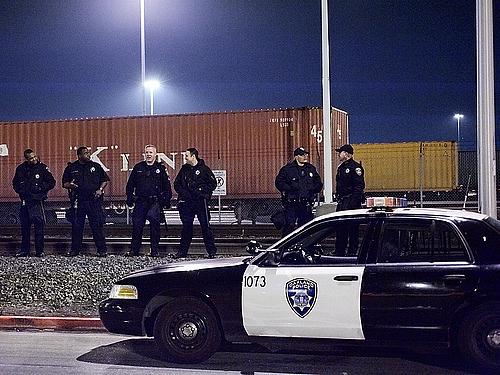Oakland Doctor Shares Teen Stories of Suffering and Resiliency Amidst Violence

Oakland pediatrician Dr. Barbara Staggers could tell you stories until your heart breaks.
She recalls a 15-year-old boy who came in to her clinic asking for a hug, because he knew he’d soon be shot dead, and Staggers was the only person he trusted to hold him. The doctor tried to intervene by placing him in a 72-hour involuntary hold, only to hear he’d been killed upon release.
Follow our fellows on Twitter this week at #chjf14.
Then there was the 18-year-old female who came in with a broken ankle. She’d jumped naked out of a second-story window after refusing her pimp’s demands to recruit 12- and 15-year-old girls into prostitution.
“I cannot recruit little girls to do what I’m forced to do,” Staggers recalled her saying. “I cannot do it. I’d rather die.”
Staggers, a longtime adolescent specialist at Children’s Hospital in Oakland, has a frontlines vantage on the sexual exploitation and violence plaguing the city’s teens. Over the past decade, she’s worked to better reach some of the city’s most vulnerable teens by opening two innovative school-based health clinics, one at East Oakland’s Castlemont High School and the other at McClymonds High School in West Oakland – two of the most violence-prone and health-poor areas in the nation. The school-based clinics try to intervene in young lives before it’s too late, but the challenges are daunting.
“In Oakland, I have been at Children’s 28 years and I’ve never seen the violence rates that I’m seeing now, particularly around sexual abuse and sexual exploitation of girls – and in terms of homicides,” Staggers said, speaking on Monday to fellows in the 2014 California Health Journalism Fellowship. “We had four homicides in my practice two weeks ago.”
Often a teen will come in for a check-up and only after a series of screening questions will clinic staff discover the patient is being abused and forced into prostitution.
“Right now, we’re seeing probably two to three sexually exploited minors in our clinic a day in some cases,” Staggers said.
The stories of abuse and violence Staggers tells are harrowing. But she also puts heavy stress on the resiliency of the teens she works with: The teenage gang member who escaped the life by fleeing to Mexico for a year during which most of his former associates were gunned down. He now runs a major health care clinic in the community.
Or the teen who had 14 pregnancies by the time she was 18 and is now a happily married attorney. Or the girl with a long history of domestic abuse who was fleeing a homicidal boyfriend.
“The day I saw her, I put her on a train to Chicago, because this guy was going to kill her,” Staggers said. The same woman is now completing a college degree in social work. “It was a case of a different kind of prescription from what we usually write. We have to be creative in adolescent medicine.”
Staggers explains that the hormonal changes wrought by puberty make teens especially vulnerable, both to the predations of adults and to their own bad decisions. For some girls, the early onset of puberty means they’re sexually perceived as adults, even though they are children in every other way.
“We have 8 year old girls, 9 year old girls who look like adult women in America,” Stagger said. “These are the girls that are preyed upon because they look like adults.”
Categorizing adolescence into early, middle and late stages, Staggers said, “Early adolescents do not abstract. They are concrete thinkers. They get into situations they cannot think their way out of.” Meanwhile, middle adolescents are busy experimenting and struggling for independence. “They test, test, test limits.”
Staggers’ clinics have hired peer advocates, finding that healthful messages are less likely to be ignored when they come from a peer teens identify with and trust. “Peer advocacy is very important in this age group because they can do things we can’t do,” Staggers said. “They can put a different kind of pressure on them.”
One of the messages emphasized is more philosophical than medicinal: Value and respect life over material possessions. When materialism trumps humanism, Staggers says, teens are more likely to put their life or others at risk.
“We love you, we care about you, we cannot replace you – can you get that?” Staggers tells them. “That’s critical, because a lot of kids think it’s about things, not about life.”
Clinic workers also ask teens about their friends and how they spend their time, since social connection can ward off risky behaviors. “Kids who are connected are resilient,” Staggers said. “Kids who are isolated are in trouble.”
Sometimes the kids who come through the clinic have the most elemental of human needs.
Early in her career, Staggers was strongly censured for hugging a patient. Now, it’s part of her daily routine, a way to show kids who might not otherwise have any positive physical affection in their lives that someone cares about them.
“I’m known to hug every patient who comes through the door,” Stagger said. “For a lot of kids, that’s important. We’re the only place where they get hugs. We have kids who ride buses to come to their doctor to get hugs. What kind of commentary is that about our society?”
Image by nereocystis via Flickr

